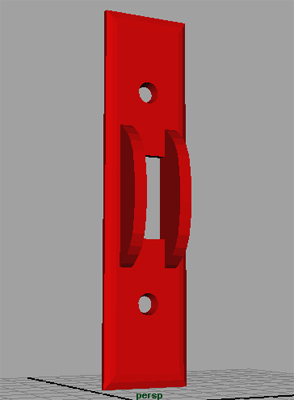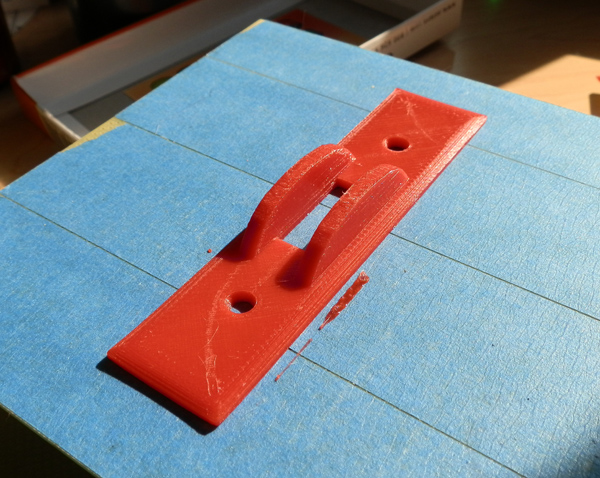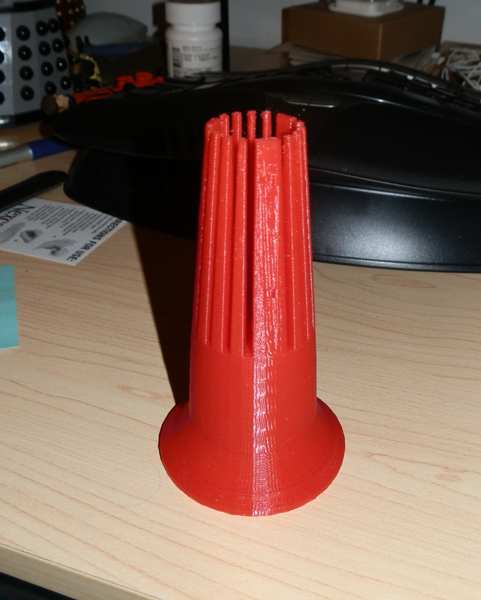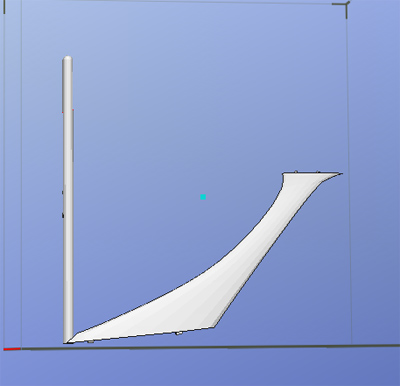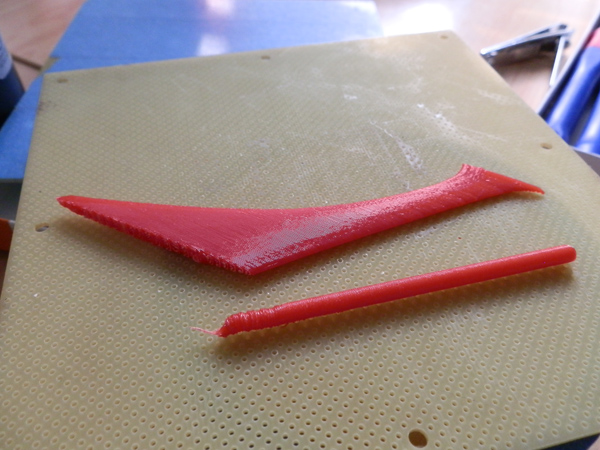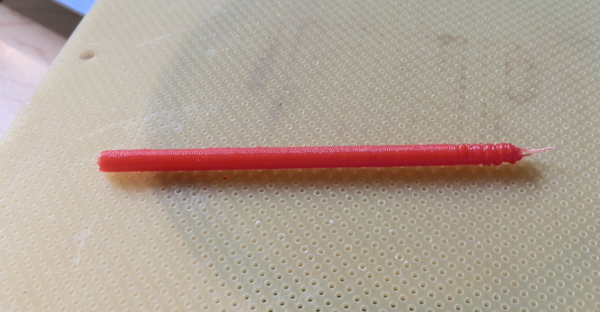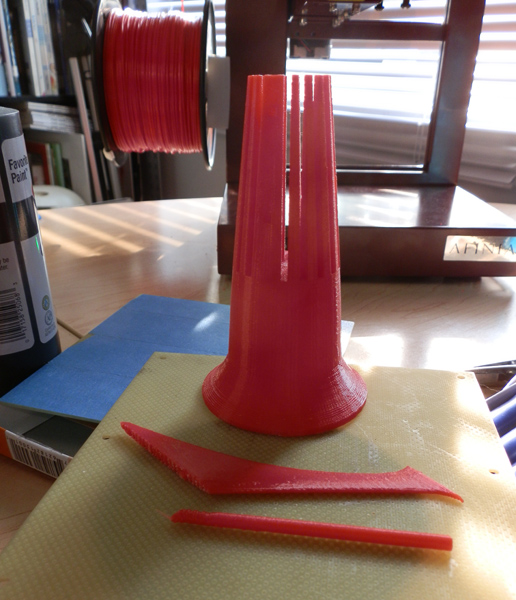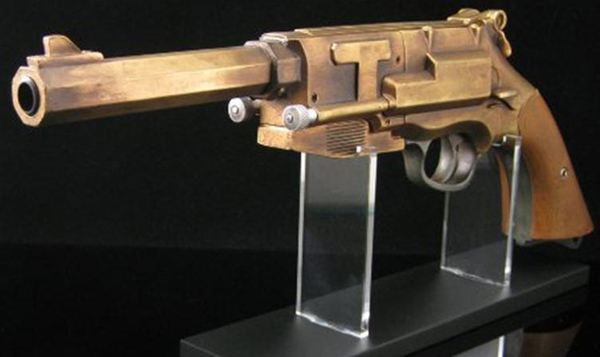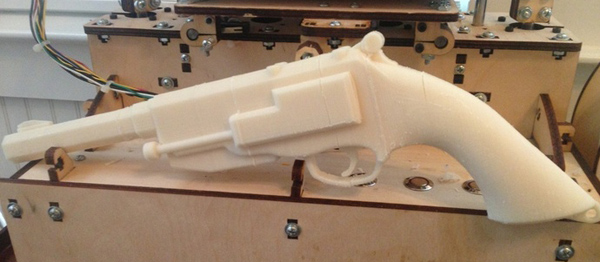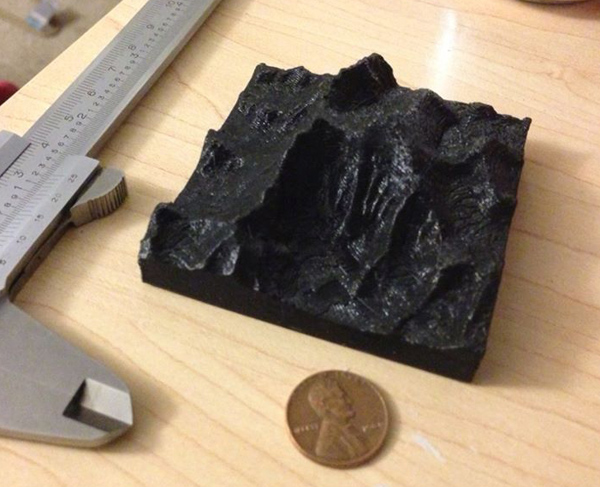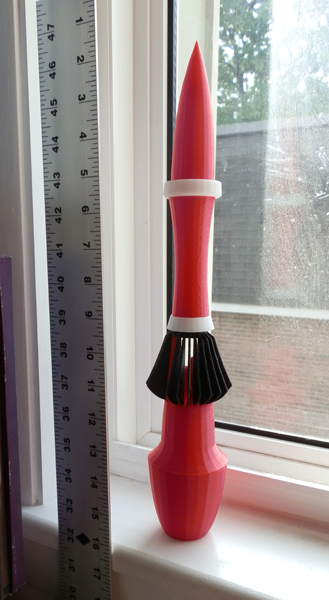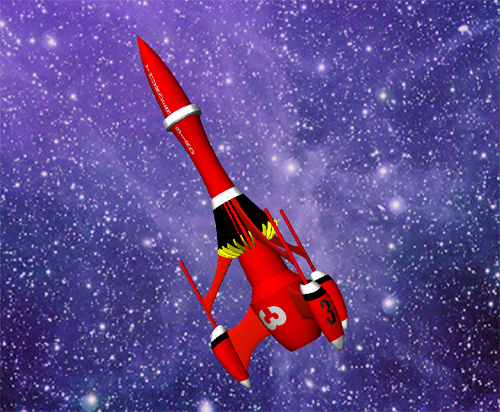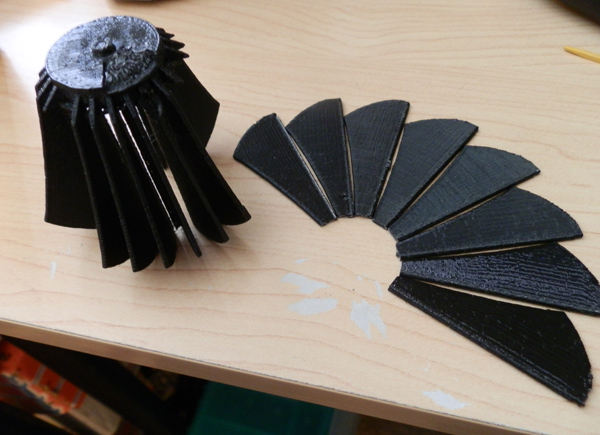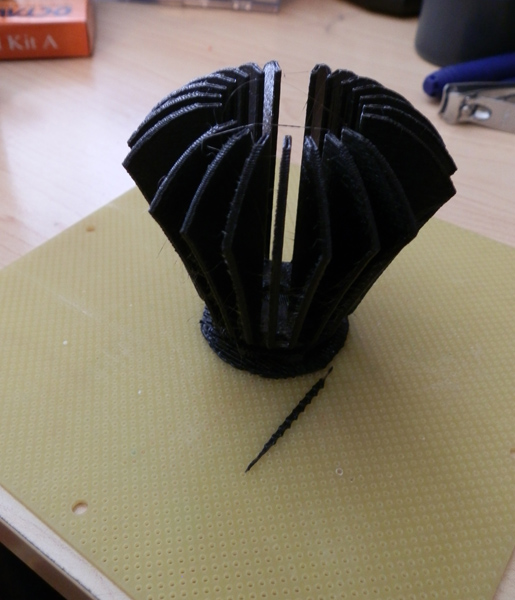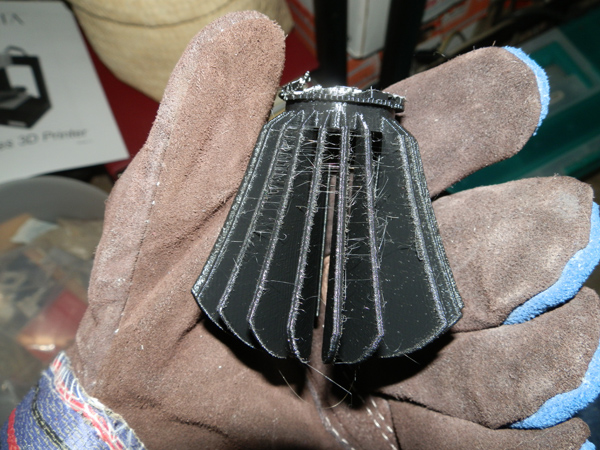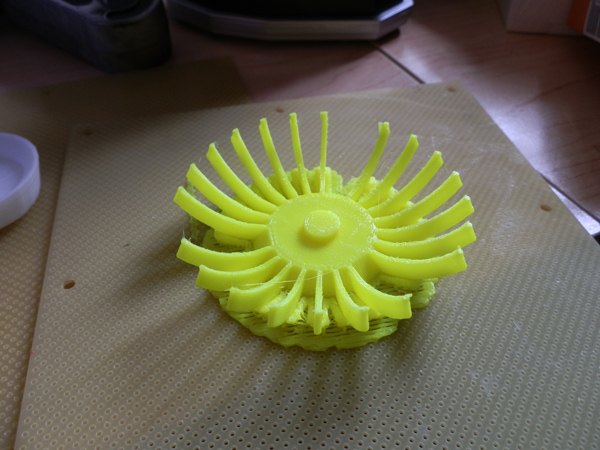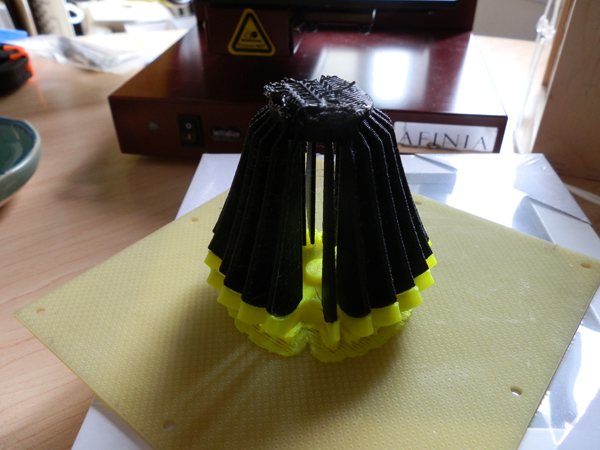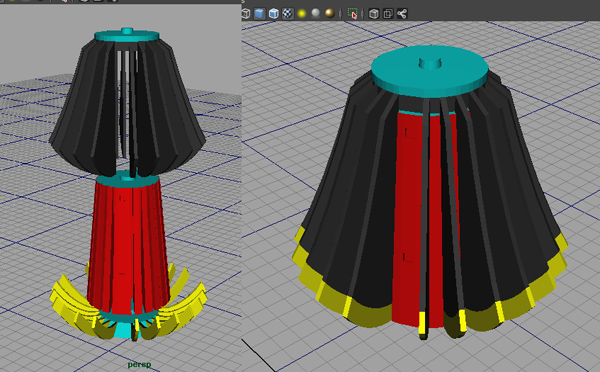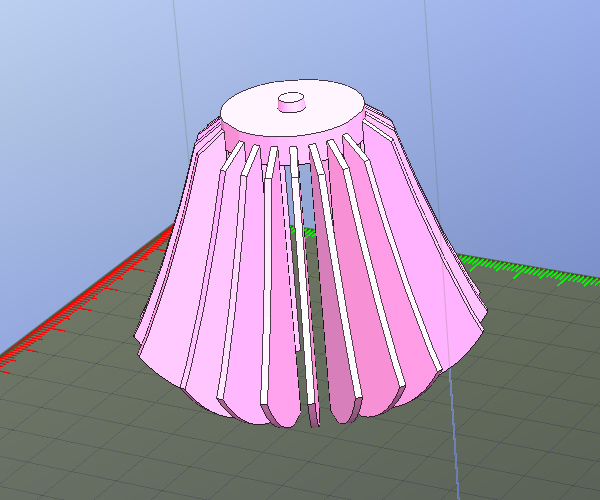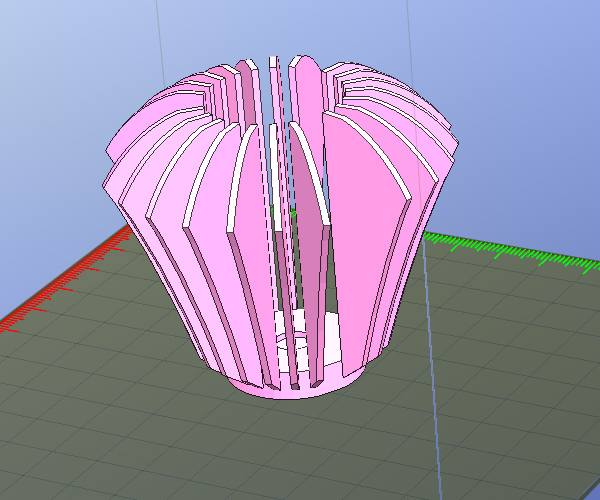Almost immediately after my first print I noticed something about maintenance of the Afinia printer, and any printer that uses perf-boards as a print bed. (Perf-boards are quite good at holding down the part. There are other methods, but this one is tried and true.)
When the raft is pried up off the perf-board, it doesnt’ always come up cleanly. That means that the plastic pegs that have melted down into the holes (which make the part hold firm to the board while printing) have come off and are now stuck in the perf-board holes.
These should be removed before printing again otherwise the benefit of the holes will be diminished.
I use a hard-wood toothpick. The ones that are square for most of the shaft and are sharpened to a non-sharp point. These points are perfect for shoving into the perf holes.
Flip the board upside down and begin pushing the toothpick through any hole that has plastic in it. It’s not always easy. Sometimes those little buggers are stubborn. And the toothpick breaks. You’ll need a lot of these.
(I’m considering finding the right paperclip gauge to use a paper clip instead, and then print a little handle for it. But that’ll be later.)
And so after doing this over my trash bucket about 20 times now, I thought: “That’s a lot of tiny bits of plastic. I wonder how that accumulates over a year.”
So I decided I’m going to keep all those bits of plastic in a jar and see how it looks when a year has gone by. It should be interesting considering I’m planning on buying a lot of colors to print with.


